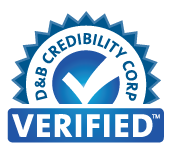Glossary
BullTrade's Glossary gives down to earth definitions of many common investment words and phrases.
If you are confused by a trading term we use, or by how we calculate our losses and gains, then feel free to e-mail us and we will add it to the glossary to help clear up any questions you may have.
Common Confusing Terms:
Short, Shorting, and Short Selling
"Short selling" is a trading technique that carries more risk than owning a stock, but less than options trading. Here is a quick synopsis or several "Short" terms:
- Short position
- Occurs when a person sells stocks he or she does not yet own. Shares must be borrowed, before the sale, to make "good delivery" to the buyer. Eventually, the shares must be bought to close out the transaction. This technique is used when an investor believes the stock price will go down.
- Short sale
- Selling a security that the seller does not own but is committed to repurchasing eventually. It is used to capitalize on an expected decline in the security's price.
- Short selling
- Establishing a market position by selling a security one does not own in anticipation of the price of that security falling.
Averaging Down
"Averaging down" is a very confusing term to novice investors. Often, folks question how we calculate our returns because they do not understand how "Averaging down" works. Here is a quick synopsis:
In the case of "average down TO $35", a certain number of shares have to be purchased below $35 to make the average cost-per-share $35. For example, since the original 1000 shares were bought at $40, 1000 shares would have to be purchased at $30 to lower the average cost-per-share to $35. An investor could also purchase 2000 shares at $32.50 after the initial purchase of 1000 shares at $40 to produce a $35 cost-per-share average.
In the case of "average down AT $30," after the initial purchase of 1000 shares at $40, an additional 1000 shares would be bought AT $30, lowering the average cost-per-share to $35. In effect, these two scenarios are very much the same, except that the "average down TO $35 offers an individual more liberty as to how many shares they buy, and at what price.
Averaging Up
"Averaging up" is an even more confusing term to novice investors than "averaging down." Here is a quick synopsis:
An initial 1000 shares of stock is shorted at $40. If the stock starts to rise, which in this case means money is being lost , we may say either "average up TO $45" or "average up AT $50."
In the case of "average up TO $45", a certain number of shares have to be shorted above $45 to make the average cost-per-share $45. For example, since the original 1000 shares were shorted at $40, 1000 shares would have to be shorted at $50 to increase the average cost-per-share to $45. An investor could also short 2000 shares at $47.50 after the initial short sell of 1000 shares at $40 to produce a $45 cost-per-share average.
In the case of "average up AT $50," after the initial shorting of 1000 shares at $40, an additional 1000 shares would be shorted AT $50, increasing the average cost-per-share to $45. In effect, these two scenarios are very much the same, except that the "average up TO $45 offers an individual more liberty as to how many shares they short sell, and at what price.


